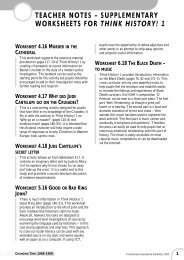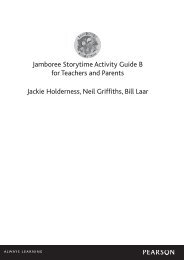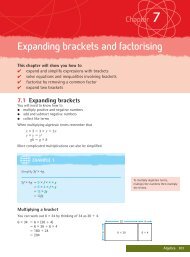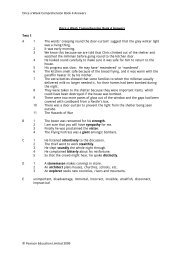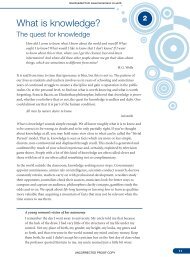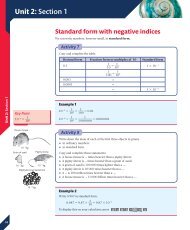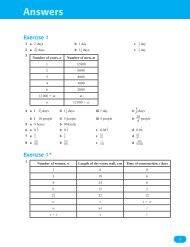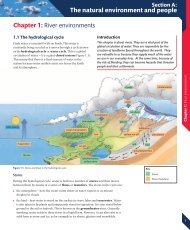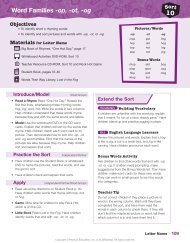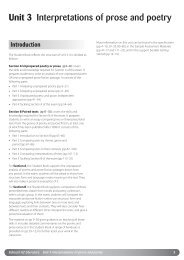2 Mechanics - Pearson Global Schools
2 Mechanics - Pearson Global Schools
2 Mechanics - Pearson Global Schools
- No tags were found...
You also want an ePaper? Increase the reach of your titles
YUMPU automatically turns print PDFs into web optimized ePapers that Google loves.
Projectile motion with air resistanceIn all the examples above we have ignored the fact that the air will resist themotion of the ball. The actual path of a ball including air resistance is likely to beas shown in Figure 2.24.Figure 2.24Without airresistanceWith airresistanceNotice both the height and range are less. It is also no longer a parabola – the waydown is steeper than the way up.2.5Forces and dynamicsAssessment statements2.2.1 Calculate the weight of a body using the expression W mg.2.2.2 Identify the forces acting on an object and draw free body diagramsrepresenting the forces acting.2.2.3 Determine the resultant force in different situations.ForcesFrom experience, we know that things don’t seem to move unless we push them,so movement is related to pushing. In this next section we will investigate thisrelationship.The size of one newtonIf you hold an object of mass 100 gin your hand then you will beexerting an upward force of aboutone newton (1 N).What is a force?A force is simply a push or a pull.The unit of force is the newton (N).Force is a vector quantity.You might believe that there are hundreds of different ways to push or pull anobject but there are actually surprisingly few.1. TensionIf you attach a rope to a body and pull it, the rope is in tension. This is also thename of the force exerted on the body.TFigure 2.25 The force experienced bythe block is tension, T.31



